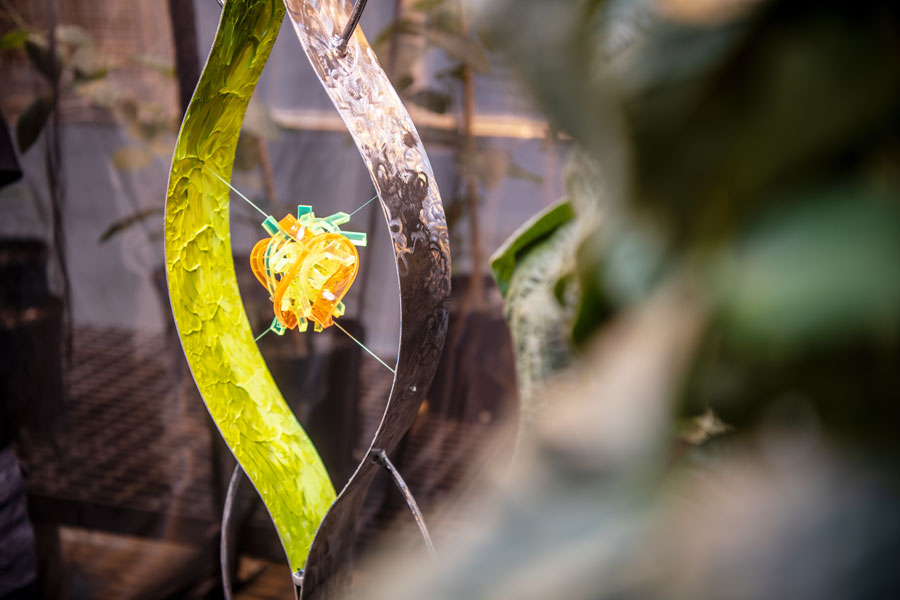Samson's readings of UNT plant research spurred striking fluorescent sculptures shaped
from acrylic plastic, steel, resin and other materials. Some offer a clear representation
while others depict parts of the plant research process in a more abstract way.
In Miracle Grow, Samson took inspiration from the model plants, Brachypodium distachyon and Arabidopsis
thaliana, which are used by UNT researchers in their studies. The sculpture displays
rows of these plants in brightly-hued acrylic plastic on a stainless-steel shelving
unit similar to ones used in the Discovery Park greenhouse. They are illuminated by UV light as a nod to the role UV light helps
researchers better examine their plant subjects. The green acrylic plastic sculpture,
In the Flow, takes an abstract look at a xylem vessel, which help transport water and nutrients
within plants.
"The research at BDI has caused me to think about plants as factories, as circuit
boards, as finely-tuned engines and much more," Samson says.
Some of his pieces have found a home in UNT's BioDiscovery Institute where they have
added much more than aesthetics.
"The pieces on loan from Phil have generated a lot of buzz among our research groups,"
says Kent Chapman, director of the BioDiscovery Institute and Regents Professor of
biochemistry. "Phil works at the interface between art and science, and brings a refreshing
new perspective to research activities of BDI members."
Samson's nearly three-decade career as a governance, risk and compliance principal
at PricewaterhouseCoopers instilled him with an insatiable curiosity. Through that
work, he helped multinational companies from casinos to chemical manufacturers improve
their business continuity programs.
"I have a background in being able to sift through very detailed information and discover
more about it," Samson says. "If I had to provide services to a client, I had to learn
everything they did so I could be a better consultant."
In his retirement, Samson, a UNT scholarship donor, is pursuing an education in studio
art at UNT and devoting more time to his art, which he previously only did in his
spare time. He knew the UNT campus from his children who are alumni -- Jordan ('16), Jose Moran ('17) and Monica Moran ('16). His wife, Monica, serves on the College of Visual Arts and Design Advancement Board. And they fund
the Samson Family Studio Arts Scholarships.
"I have this innate need to create, communicate to people and explore important topics,"
Samson says.
Samson hopes his work serves as an example and springboard for further project collaborations
between art and science disciplines at UNT in the future similar to the cross-disciplinary
work that brought modernization to Florence, Italy during the Renaissance period.
"I think a healthy dose of creativity can spark a ton of innovation," Samson says.
"By creating some of those sparks deep within the mind and bringing together ideas
and disciplines that weren't previously connected, that can ultimately help society."

